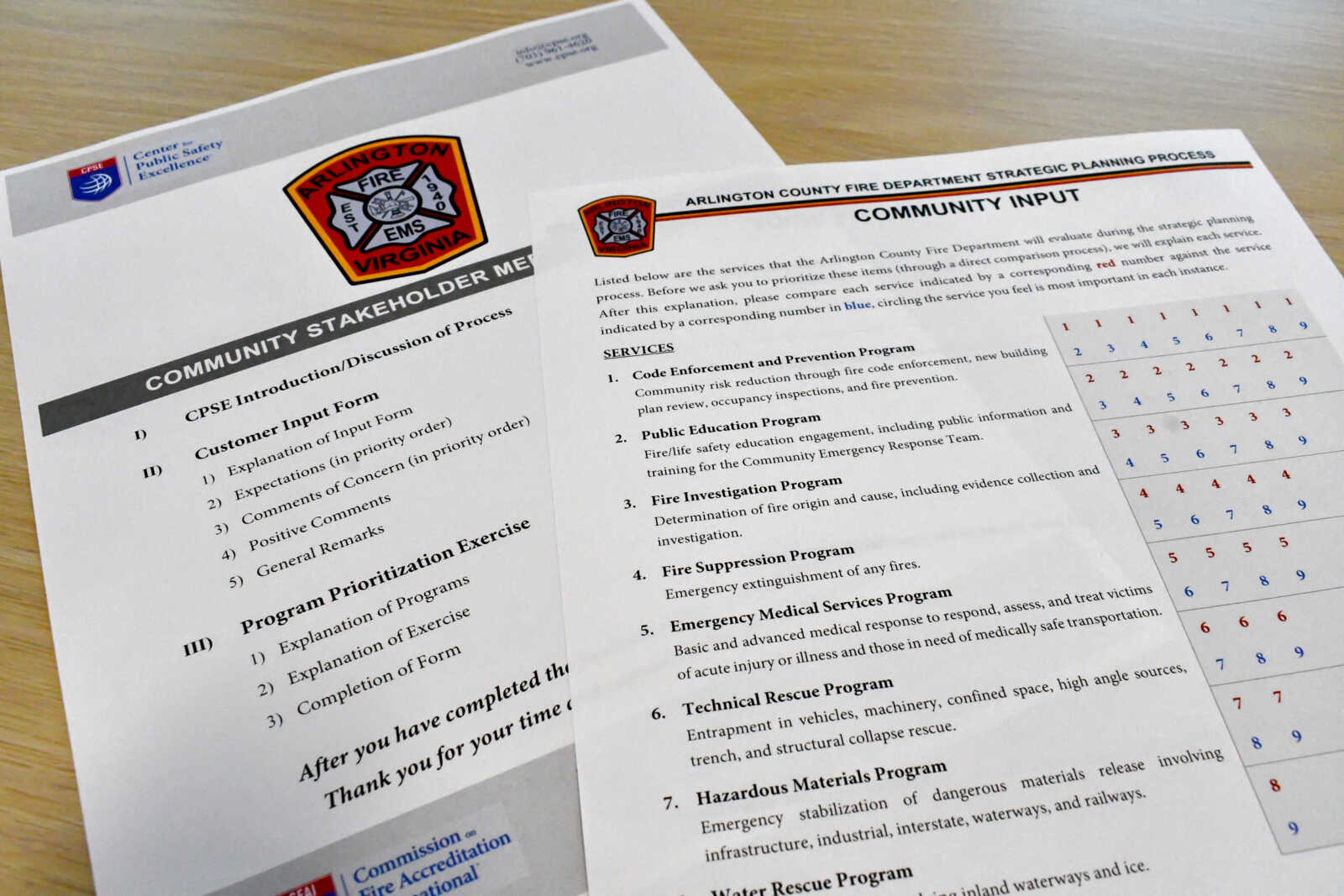In a bid to improve accountability, the Arlington County Fire Department is looking to put its mission and priorities in writing with its first-ever strategic plan.
The plan is designed to help the department identify its values and strengths and determine where to channel its resources over the next five years.
“The core values that someone wrote or prescribed in years past don’t necessarily reflect what [community members and fire personnel] believe in and feel represent them today,” ACFD Assistant Fire Chief Jason Jenkins told ARLnow. “This is our opportunity to rebrand our mission, reimagine our core values to again focus on our future.”
Although a strategic plan is not mandatory, Jenkins — who spent 26 years at Fairfax County Fire and Rescue before coming to Arlington — said he believes it would provide clarity where there is “a lot of uncertainty” around the department’s goals.
“And without a clear focus, or clarity around the organizational goals, then it leaves folks wonder wondering where are we going, and how do we plan to get there,” he said.
The focus on core values comes as amid internal changes made in response to allegations of harassment of female employees and hazing of recruits.
Jenkins also the strategic plan could also inform how firefighters, and other resources, are allocated from station to station. The fire department got a boost last year when the Arlington County Board greenlit the hiring of 40 more firefighters and instituted a Kelly Day, which cut the average workweek from 56 to 50 hours.
As ACFD begins to recover from several years of understaffing, which led to a troubling reliance on overtime, it is also having to evolve to respond to new public safety threats and more medical emergencies.
The strategic plan could ensure ACFD has “the right type apparatus in the right places as well as an effective number of specially trained firefighters on duty to mitigate any multitude of hazards,” Brian Lynch, president of the firefighters union, Local 2800, tells ARLnow.
“This is even more important now as Arlington continues to grow and threats, such as climate change, increase the risks we need to protect the community from,” he said.
Lynch commended Jenkins for his “energy” in helping spearhead the strategic plan.
“We are optimistic that by listening to the people who make the department work, as well as the people we serve, combined with the assistance of outside experts, will help guide the efforts to make a safer Arlington for all,” Lynch said.
Work on the strategic plan kicked off earlier this month with an in-person feedback session at the Long Bridge Aquatic Center.
About 20 community stakeholders, including county government representatives, civic association members and local business owners, filled out surveys about the department’s strengths and areas in need of improvement.
They also rated which programs — including fire code enforcement and prevention, fire suppression, and emergency medical services — they believe the department should prioritize.
The feedback will be published as part of a final draft of the strategic plan, which Jenkins says should be ready by Feb. 1, 2024.




















